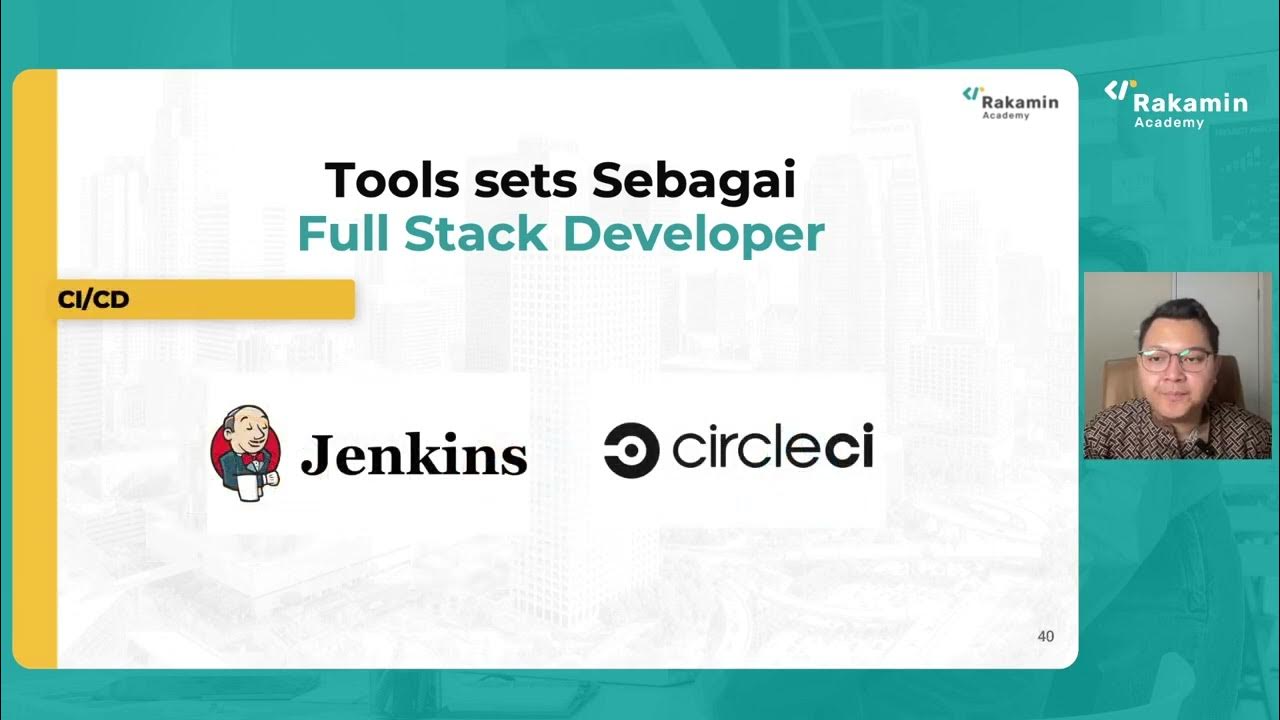Full Stack Development Explained
Summary
TLDRIn this video, the speaker introduces full stack development, explaining its importance for aspiring developers. They clarify that full stack development involves both front end (user interface) and back end (server-side code) of web applications, using YouTube as an example. Viewers learn that a full stack developer should be proficient in technologies like HTML, CSS, JavaScript, and server management. The speaker emphasizes the need to understand how these components interact, likening the technology stack to a stack of pancakes. They conclude by inviting viewers to like the video and consider joining a mentorship program for deeper learning.
Takeaways
- 😀 Full stack development refers to both the front end and back end of a web application.
- 😀 A web application, like YouTube, involves complex systems beyond just the website interface.
- 😀 The front end (client-side) is what users see and interact with, and involves technologies like HTML, CSS, and JavaScript.
- 😀 The back end (server-side) handles the logic, databases, and server-side code that make web apps functional.
- 😀 Full stack developers are proficient in both front-end and back-end technologies, enabling them to work on all aspects of a web app.
- 😀 The term 'full stack' comes from the concept of a stack of pancakes, with each layer representing different parts of a web application.
- 😀 While full stack developers don't need to be experts in every layer, they must understand how all the components work together.
- 😀 A full stack developer can work with APIs, databases, web servers, and more to manage data flow and app functionality.
- 😀 The front end is just the tip of the iceberg, and full stack development encompasses much more, including handling large amounts of data on remote servers.
- 😀 Full stack development is a versatile skill set, and while the term may be controversial, it continues to be widely used in the tech industry.
Q & A
What is full stack development?
-Full stack development refers to the practice of working with both the front-end and back-end parts of a web application. A full stack developer is proficient in both designing the user interface (front-end) and handling server-side operations (back-end).
What is the difference between front-end and back-end in web development?
-The front-end is what users interact with directly on a website or web application. It involves HTML, CSS, and JavaScript. The back-end, on the other hand, handles the server-side operations, such as managing databases, APIs, and data processing, to support the front-end functionalities.
Why is full stack development important for web applications?
-Full stack development is important because it allows developers to handle all aspects of a web application. This means they can work on both the user interface and the server-side functionality, making them versatile and able to build a complete, functional web application.
What does a front-end developer do?
-A front-end developer is responsible for creating and managing the user interface of a web application. They work with technologies like HTML, CSS, and JavaScript to design how the application looks and how users interact with it.
What technologies are typically involved in front-end development?
-The primary technologies used in front-end development are HTML, CSS, and JavaScript. These tools work together to structure, style, and add interactivity to web pages, creating the user-facing part of a web application.
What does a back-end developer do?
-A back-end developer works on the server-side of a web application. They handle data storage, server management, and ensuring that the front-end receives the necessary data to function properly. This often involves working with databases, APIs, and web servers.
What technologies are typically involved in back-end development?
-Back-end development typically involves technologies like server-side programming languages (e.g., Node.js, Python, Ruby), databases (e.g., MySQL, MongoDB), and web servers (e.g., Apache, Nginx). It also includes working with APIs to manage data flow between the front-end and back-end.
What is an API and why is it important for full stack development?
-An API (Application Programming Interface) is a set of rules that allow different software systems to communicate with each other. In full stack development, APIs are important because they enable the front-end to request and receive data from the back-end, facilitating interaction between the user interface and the server-side processes.
Why is the term 'full stack' used to describe this type of development?
-The term 'full stack' is used because it refers to a complete 'stack' of technologies that developers work with, from the front-end (top layer) to the back-end (bottom layers). The stack is similar to a stack of pancakes, with each technology building upon the one before it.
Can a full stack developer be an expert in both front-end and back-end?
-While full stack developers have proficiency in both front-end and back-end technologies, it's unlikely that they are experts in every aspect of both. Full stack development is about having a broad skill set across both areas, not necessarily mastering every technology in the stack.
Outlines

This section is available to paid users only. Please upgrade to access this part.
Upgrade NowMindmap

This section is available to paid users only. Please upgrade to access this part.
Upgrade NowKeywords

This section is available to paid users only. Please upgrade to access this part.
Upgrade NowHighlights

This section is available to paid users only. Please upgrade to access this part.
Upgrade NowTranscripts

This section is available to paid users only. Please upgrade to access this part.
Upgrade Now5.0 / 5 (0 votes)





